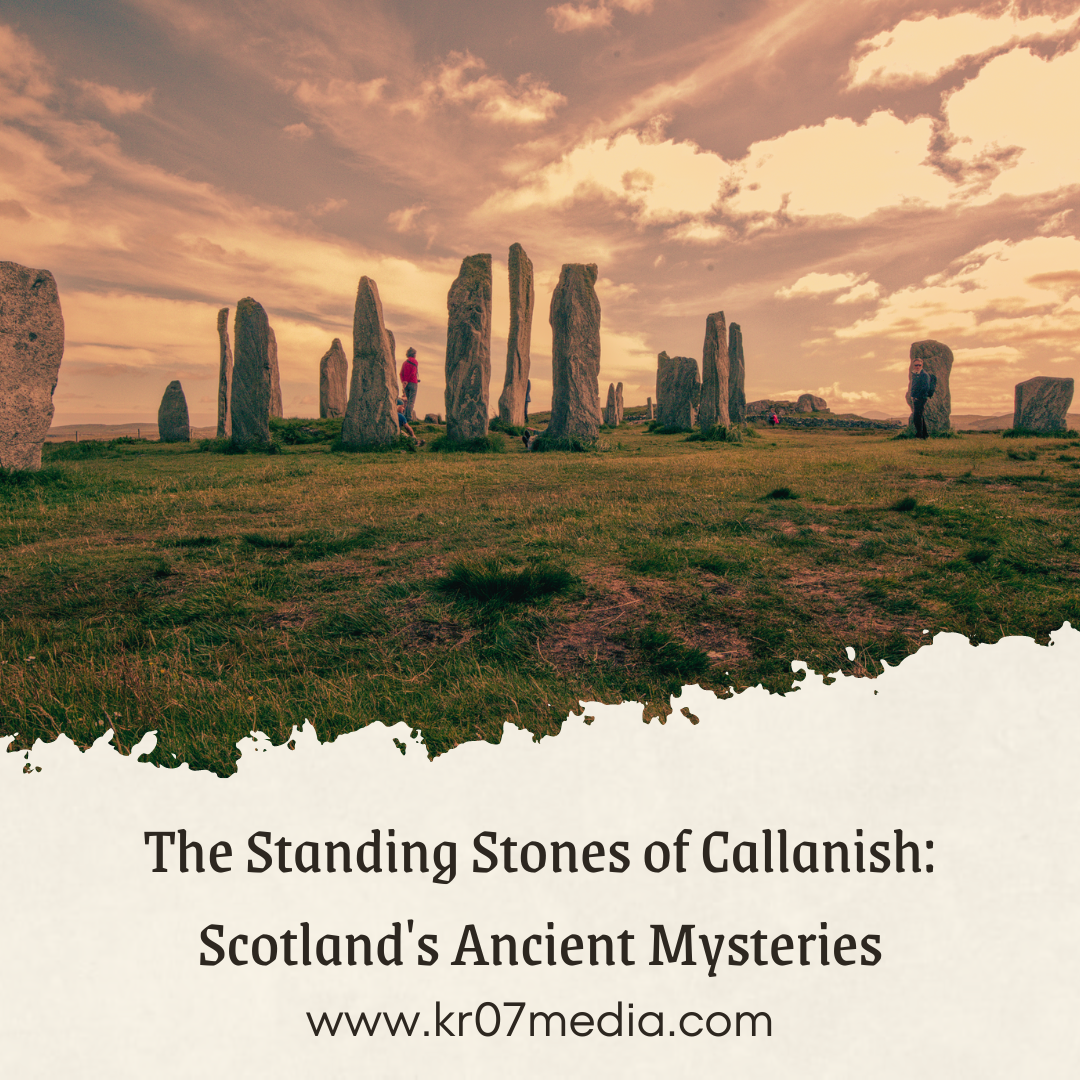Situated on the Isle of Lewis in the Outer Hebrides of Scotland, the Standing Stones of Callanish (Calanais in Gaelic) are among the most enigmatic and intriguing archaeological sites in the world. These ancient megaliths, older than Stonehenge and the Pyramids of Giza, have fascinated scholars, historians, and visitors for centuries. Their purpose, origin, and the people who built them remain shrouded in mystery, fueling endless speculation and wonder.
The Site and Its History
The Callanish Stones, dating back to around 2900-2600 BC, consist of a central stone circle, with an imposing monolith at its heart, surrounded by smaller stone settings and rows of stones radiating outward. There are several other stone circles and alignments in the area, suggesting that Callanish was part of a larger ritual landscape.
Excavations have revealed that the site was used for a long period, with evidence of human activity spanning from the Neolithic through to the Bronze Age. The stones were erected during the late Neolithic period, a time marked by significant social and cultural changes as communities transitioned from hunting and gathering to settled agricultural life.
Mysteries and Theories
The purpose of the Callanish Stones remains speculative. Some of the most popular theories include:
Astronomical Observatory
One of the most compelling theories is that the stones were used as an astronomical observatory. The layout of the stones and their alignments suggest that they were positioned to track lunar cycles and mark significant celestial events, such as solstices and equinoxes. The alignment of the stones with the setting moon and the rising sun suggests a sophisticated understanding of astronomy by the ancient people who built them.
Ritual and Ceremonial Use
Many believe that the stones had a ceremonial or religious purpose. The central stone circle might have been a place for rituals, gatherings, and possibly even burials. The arrangement of the stones could have symbolized a connection between the earthly and the celestial, serving as a sacred space for worship or a site for community gatherings to mark important events in the agricultural calendar.
Navigation and Territorial Markers
Another theory posits that the stones served as navigational aids or territorial markers. Situated on a high ridge, the stones are visible from a considerable distance, which could have made them important landmarks for ancient travelers or signifiers of territorial boundaries.
The Callanish Experience
Visiting the Callanish Stones is a powerful experience, evoking a deep sense of connection to the ancient past. The site’s remote location adds to its mystique, as the stones stand silently against the backdrop of the rugged Hebridean landscape, often shrouded in mist and buffeted by winds.
The nearby Calanais Visitor Centre provides valuable insights into the history and significance of the stones. Exhibits explore the archaeological findings, the various theories about the site’s purpose, and the cultural context of the people who built it. Guided tours and informational displays enhance the visitor experience, offering a glimpse into the ancient world of Callanish.
Conclusion
The Standing Stones of Callanish continue to captivate and mystify. Their ancient origins and the secrets they hold offer a tantalizing glimpse into the lives and beliefs of Scotland’s prehistoric people. Whether viewed as an astronomical observatory, a ceremonial site, or an enigmatic monument to an ancient way of life, Callanish stands as a testament to human ingenuity and the enduring allure of the unknown. For those who seek to connect with the distant past, the Standing Stones of Callanish offer an unforgettable journey into Scotland's ancient mysteries.



